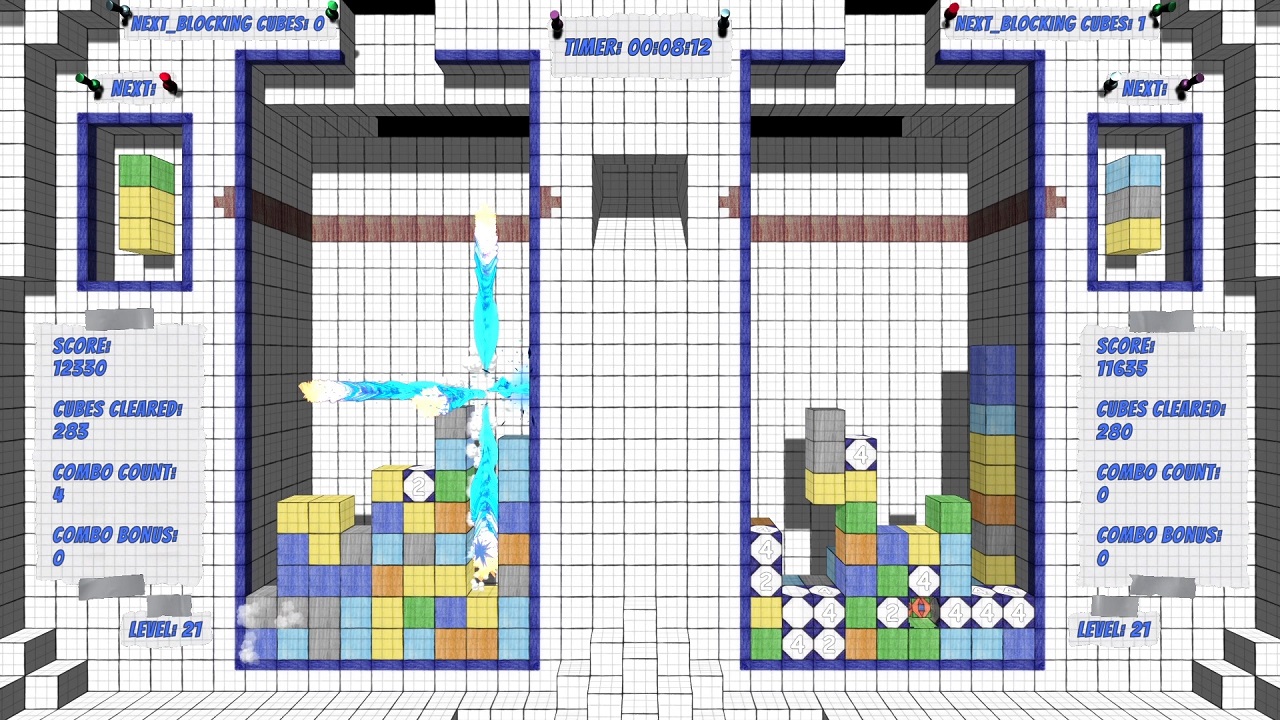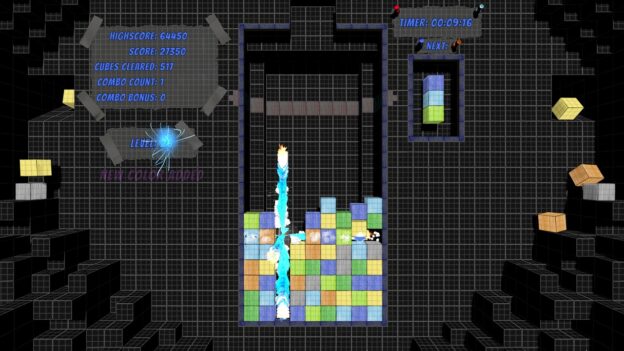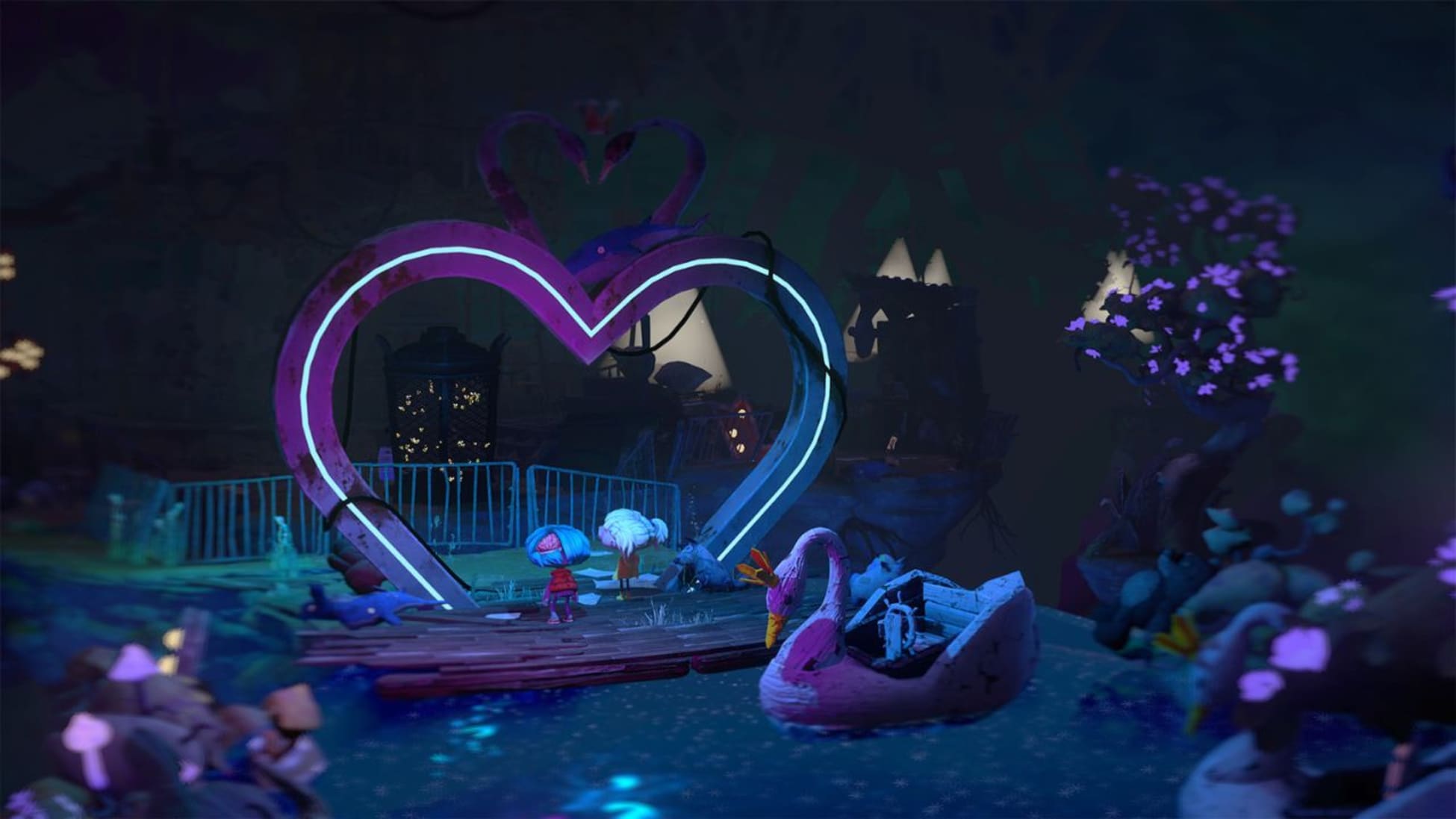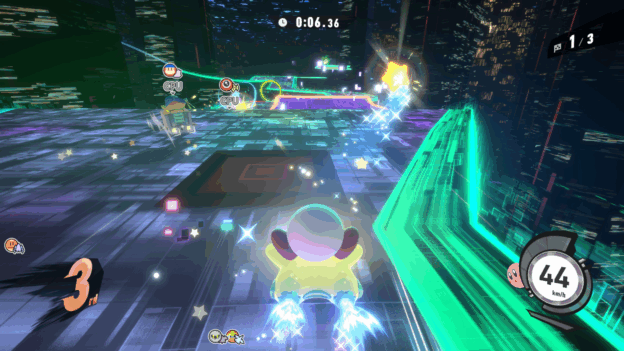Review: Papertris (Nintendo Switch)
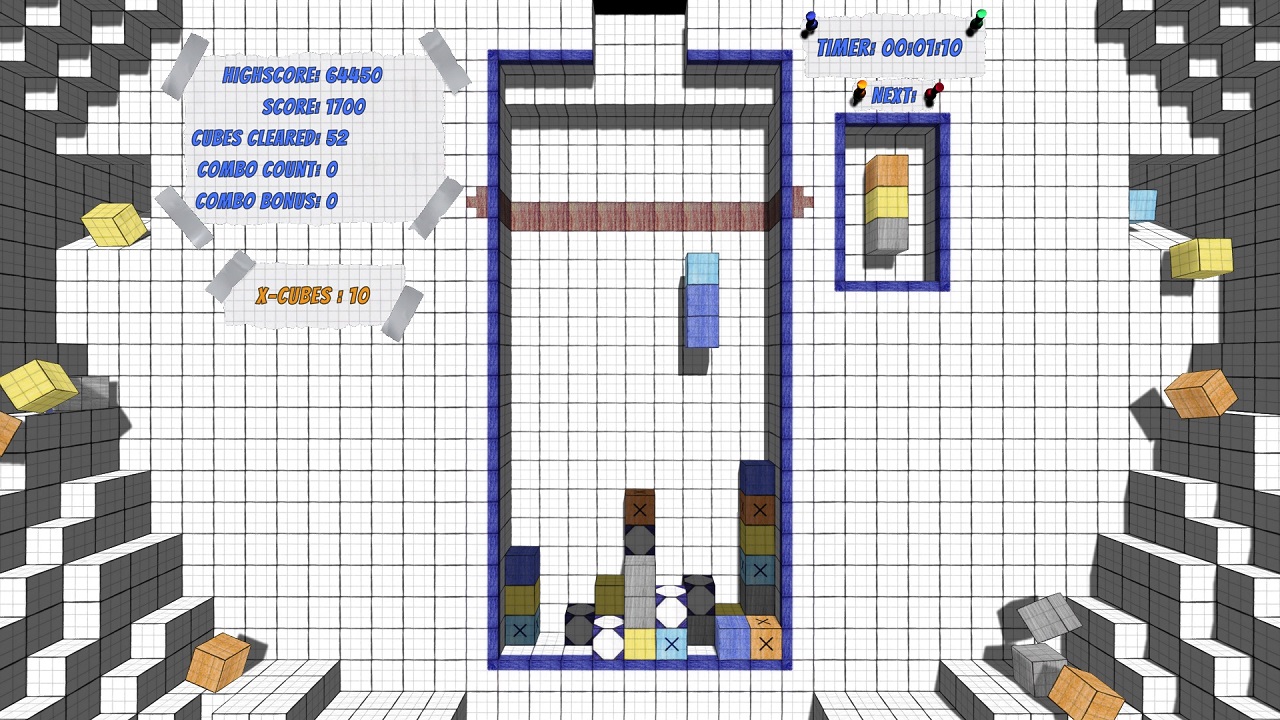
With a name like Papertris, you might expect a paper-themed puzzler in the Tetris mold. In reality, Papertris reminds me more of Columns’ color-matching gameplay. Or maybe it’s similar to Tetris 2, a late NES sequel that’s actually pretty fun. Papertris is also pretty fun, at least some of the time. However, it lacks some options that would’ve moved it from fair to very good territory.
In this game, you’ll find yourself matching blocks of the same color to eliminate them from the playfield. Sometimes you’ll be clearing as many as possible, other times you’ll be focused on specific colors, and further such variants. It’s an intuitive setup on paper, no pun intended. Solo players have two modes: challenge and endless.
The former mode starts to introduce some elements that are less intuitive, namely gimmick blocks. There are many of these, but there’s no tutorial on how to use them. Granted, you’ll soon grow accustomed to their techniques, such as eliminating rows in either direction, as one example. However, even after playing for a few hours, I found myself asking, “What does this block do again?”
Another less intuitive (though unique) element is the use of layered backgrounds. It’s somewhat hard to explain in a limited word count; it’s also hard to wrap your head around. It’s challenging, and while some will appreciate the challenge and fresh approach, others, like myself, will long for something more classic. Sometimes less is more. With better instruction, fewer gimmick cubes, and options to adjust some of these unique elements, Papertris would have fared better.
As far as endless mode, I once again find myself longing for an option, namely difficulty. This mode promised to get “faster and harder from level to level.” After 15 minutes of play, with little increase in difficulty, I found myself returning to challenge mode. The ramp up is too slow, speaking as an experienced (though not great) puzzle player. Difficulty options to raise the challenge would give this mode more legs.
Of course, if you have a friend, multiplayer can keep you playing in ways solo play can’t. There’s a trio of two-player modes, all competitive with no co-op. Of course, my wife and I also found trading off between challenge mode levels works as another form of multiplayer, cooperative if not simultaneous.
While the controls are simple, there’s no way to remap them. Accessing the control option pulls up a small, non-adjustable diagram only. I mention this mainly because the b-button also serves as the a-button to confirm. Given decades of muscle memory, I’d have to ask the devs what their thought process was here; a small detail overall, but an annoyance I must call out.
Visually, the paper aesthetic comes through. Evidently, most of the game was hand drawn by a pair of preschoolers. The game was also “co-designed” by them for a fun bit of hyperbole. Given the origins, it’s hard to criticize. I’ll only say that while I enjoy the animated backgrounds, some color would break the monotony. It’s all white (or gray in dark mode) and slightly bland. But options to make the backgrounds less distracting (or easier for color-blind players) are appreciated.
The “atmospheric” music is an eclectic mix. Sometimes it’s rock, sometimes it’s funky, and sometimes it’s chill. One tune makes me think of spy infiltration, while the other evokes memories of Atari Jaguar cartridge tunes. Some of it fits better than others, but it’s interesting, making me wish there was an in-game music player. Again, options to adjust the music and sound independently are welcomed.
Papertris is solid for its budget price. While I would’ve liked more options (and a consistent challenge), it’s a game built off classics. Local and online leaderboards help, too.

